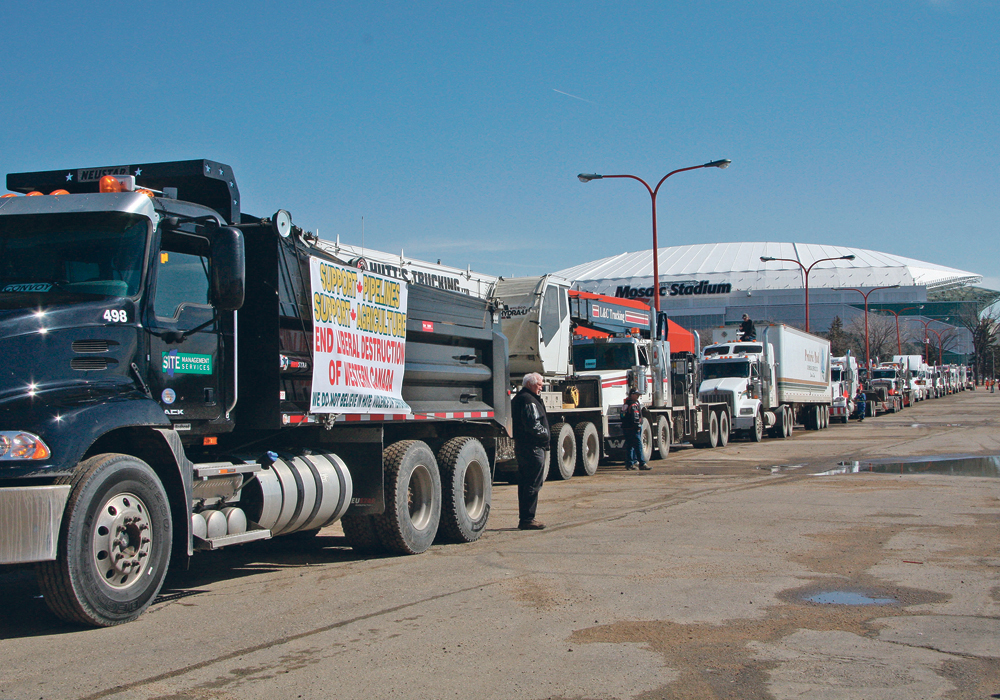Prime Minister Justin Trudeau and United States President Joe Biden are fighting the same fight — to get farmers on board with ambitious climate plans.
Industry groups in both countries say efforts are already being made to reduce emissions.
That is true in many instances, but as was pointed out in a recent Canadian Agri-Food Policy Institute (CAPI) dialogue, the sector is the only Canadian industry projected to have emissions increase between 2005 and 2030.
Like Canada, emissions from American farm operations continue to move in the wrong direction.
Read Also

Proactive approach best bet with looming catastrophes
The Pan-Canadian Action Plan on African swine fever has been developed to avoid the worst case scenario — a total loss ofmarket access.
The U.S. administration’s new dedication to fight climate change will reinvigorate efforts to reduce emissions, but Canada wasn’t keeping pace. Overall, greenhouse gas emissions have dropped at a higher rate in the U.S. since 2005.
Ag-lobby groups say their members know climate change is real, and common sense tells us farmers are aware of the interest in environmentally friendly land management, but that hasn’t stopped farmer skepticism over the effectiveness of their government’s green policies.
Most farmers continue to oppose carbon pricing, and in Canada, some producer groups unenthusiastically shrugged over a 2021 budget dedicating millions of dollars to assist producers in adopting green tech.
Operating in a comparatively more theatrical political environment, Biden is tasked with convincing producers he does not plan on banning hamburgers, as some of his political opponents have suggested, despite few details of his climate strategy being readily available.
Biden’s goal of hitting net-zero emissions by 2050 goes beyond the already ambitious target shared by Canada and other signatories of the Paris Accord.
A path to a 2030 emissions target for the U.S. is found in a recent submission from the country to the United Nations.
It lays out plans to scale up “climate smart agricultural practices” like cover crops and rotational grazing while also making mention of “potential to sequester and store large quantities of carbon.”
No mention of hamburgers, or even beef.
Trudeau and Biden’s efforts to get farmers on board with their climate plans are further hindered because producers in the U.S. and Canada aren’t traditional allies of Liberal, or Democrat, governments.
Biden’s plans aim to support farmers as they move to green technologies and reward farmers who have successfully found new ways of sequestering carbon.
Tom Vilsack, Biden’s agriculture secretary, said efforts to reduce emissions will “focus on enhancing climate-smart agricultural practices, the development of biofuels, carbon capture and sequestration, better forest management and reforestation.”
At least at a high level, the American plan has its similarities with Canada’s in that it looks to broadly support farmers as they transition to greener technologies and enter the carbon offset market.
Policy makers in both jurisdictions are currently grappling with big questions, like how, if at all, early adopters of green technology should be supported.
Both countries are also witnessing the continued rapid development of a carbon market, creating another set of challenges.
Concerns over registries, or how to accurately quantify green efforts, are common and prices for carbon offsets offered at the various exchanges vary.
Despite these challenges and confusions found in implementing new green policies, the reality of the climate crisis creates an urgency to take action.
Biden recommitting the U.S. to international climate goals is a welcome sign for anyone who likes the Earth.
While unlikely due to issues of competitiveness, Canada and the U.S. should work together where possible to align policies for producers to help combat climate change.
D.C. Fraser is Glacier Farm Media’s Ottawa correspondent. Reach out to him by emailing dfraser@farmmedia.com.


















